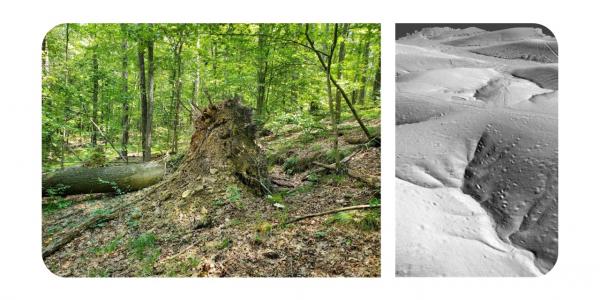EEPS Colloquium: Tyler Doane
Topographic roughness as an archive of geomorphic processes and weather events
A central goal of geomorphology is to quantify the relationships between sediment transport processes and ecology, hydrology, climate, and weather. The scales and frequency of sediment transport processes; however, challenge direct human observation and frustrate progress towards that goal. Here, I present the topographic roughness of a land surface as a valuable archive of geomorphic processes and events. I will focus largely on the case of tree throw, in which extreme weather events topple trees that in turn create topographic pits and mounds on the forest floor and are a source of topographic roughness. With time, these topographic signatures decay due to the action of small scale geomorphic processes. The surface roughness then reflects a balance between the roughening process (tree uprooting) and decay process (sediment transport). I will present theory that explains this balance and apply it to southern Indiana to estimate the overall contribution of trees to sediment transport. I will further show that this theory and measured roughness values can combine to inform a probability distribution of wind speeds that trees can withstand before toppling. I will end with a generalization of the theory to other cases that involve desert shrubs, avulsions, and impact cratering.
Hosted by: Claire Masteller and Jed Dale

